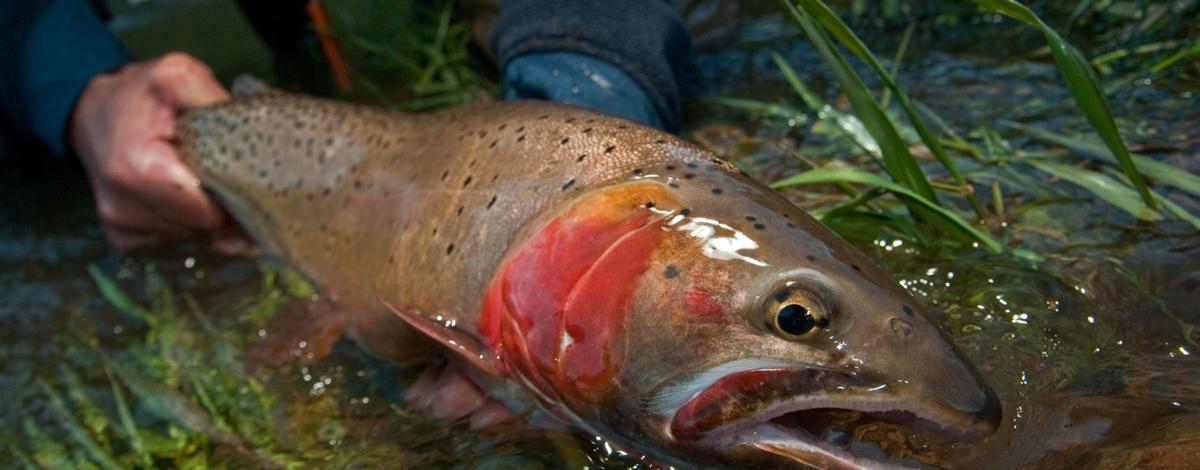Written by Megan Heller ( University of Idaho)
Nestled on the Idaho-Utah border, Bear Lake is a destination fishery for trophy Bonneville Cutthroat Trout (BCT), a subspecies of Cutthroat Trout unique to Idaho’s Southeast Region. Bonneville Cutthroat Trout have a storied history and were thought to have been nearly eliminated from Bear Lake in the early 1900s due to a number of factors, including changes to tributary habitat and overharvest. Following angling regulation changes and extensive work using habitat enhancements in the tributaries, wild Bonneville Cutthroat Trout have increased substantially based on recent fishery monitoring. Harvest of wild BCT has not been allowed since 1998, and only BCT of hatchery origin can be harvested. With recent increases in wild BCT, many anglers have asked about the potential to expand harvest opportunity. Further, anglers have asked Idaho Fish and Game to evaluate the sustainability of wild BCT harvest and the regulatory framework that would be necessary to achieve that goal. As such, the IDFG has set out to answer these questions and to better understand the biology of the population in the context of increasing harvest opportunity in Bear Lake.
The Idaho Department of Fish and Game partnered with the Idaho Cooperative Fish and Wildlife Research Unit at the University of Idaho to conduct research on BCT in Bear Lake and its tributaries. The goal of the research is to better understand factors that influence BCT in Bear Lake tributaries and to provide information about alternative management scenarios (e.g., seasons, bag limits, length limits) that could support a sustainable harvest fishery. Ultimately, a combination of biological and social information will be coupled to help inform decisions relative to wild fish harvest, and this research focuses on the biological side of that process. Many pieces of basic biology feed this research project, and those pieces broadly focus on how many fish there are and what harvestable surplus exists.
Preliminary results from this research are expected soon and IDFG will update the public as those are available. Currently, University of Idaho researchers are looking at the patterns in migration and estimating abundance of BCT in the primary tributaries to Bear Lake—St. Charles, Fish Haven, and Swan creeks. In addition, sampling is being conducted in the lake itself to look at the adult population and how it functions. As an example, researchers will look at rates of births and deaths in the BCT population, and then estimate the compatibility of various harvest scenarios along with it.
Folks interested in learning more about this work are encouraged to contact fisheries management staff at the Southeast Regional office in Pocatello at (208) 232-4703.

